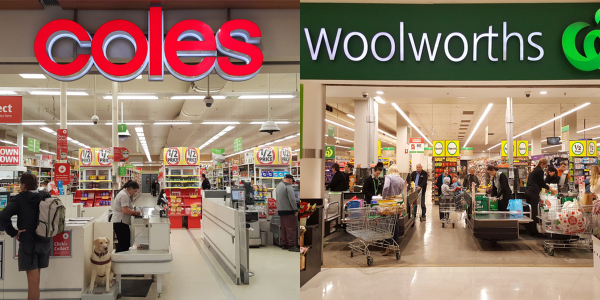The shocking price difference: How much more are you paying for your supermarket shop now compared to 2021?
- Replies 6
Since starting the Seniors Discount Club, we've seen a significant change in grocery prices. Gone are the days when you could buy a kilo of potatoes for a gold coin. Fast forward to 2023, and the landscape of supermarket shopping has drastically transformed, with some popular items costing double the price we used to pay back in 2021!

Indeed, according to a recent report by Finder, grocery shopping has become one of the top three 'most stressful expenses' for 43% of Australians. With the escalating cost of living, more Australians are struggling to make ends meet, forcing them to reevaluate and adapt their shopping habits.
So how much have our weekly grocery shopping costs changed over the years? Let's dive deep into what we're paying now compared to 2021 and see where the expenses come from and the difference between the two eras.
The Australian Bureau of Statistics (ABS) reports that the cost of food and non-alcoholic drinks has risen by 8% within just 12 months. Everyday grocery items like milk, meat, and cleaning products have all seen substantial price increases.
For example, the price of potatoes has skyrocketed by 90% in just two years, while a bag of carrots now costs double its 2021 price, at $2.40. On the dairy front, most brand-name milk has climbed past the $2/L mark, and a 500g block of cheese from Woolworths is now just shy of $10.
These trends are supported by the latest ABS data, which has found the price of dairy items to have risen the most out of any food category over the past year – up nearly 15%.
On the bright side, you can still grab a bag of home-brand pasta at Coles for just $1, but the price of pasta sauce has gone up by 30%.
Thinking about reducing your caffeine intake? Now might be the perfect time, as a large jar of Moccona instant coffee will set you back $28 at Coles, compared to $24 two years ago.
These price hikes are not limited to food and drinks. Rising freight costs and supply chain disruptions have also pushed up the prices of cleaning products and toiletries. While the humble toilet roll is now easier to find on supermarket shelves, each roll will cost more than $1.
Similarly, a popular laundry liquid brand has seen a 20% increase in price, and a large bottle of body wash has leapt a staggering 56%.
To give a clearer picture, a typical supermarket shop now comes to $204.85 - that's $46.25 more expensive (an increase of almost 30%) compared to an identical shop in 2021. That explains how Finder found that Australians are now spending an additional $1,924 per year on groceries alone.
With the inflation rate stubbornly hovering at a historic high of 7%, it seems that these price rises may not be easing off anytime soon.

Despite the challenges these price increases pose, we at the Seniors Discount Club encourage you to explore various strategies to shop smarter, such as carefully monitoring sales (which we report on every Wednesday morning here), utilising discounts, and being more mindful of your consuming habits. With some concerted effort, we can all continue to enjoy a good quality of life without breaking the bank.
Remember that being a member of the Seniors Discount Club can open doors for various savings opportunities, so let's stay united and navigate this new era of grocery shopping together, cherishing the memories of yesteryears while tackling the challenges of today!
Are you struggling with your grocery shopping? Is there an item that has increased significantly in price that shocked you? Tell us all about it in the comments below!

Coles and Woolworths have both increased their prices significantly since 2021. Image source: Shutterstock.
Indeed, according to a recent report by Finder, grocery shopping has become one of the top three 'most stressful expenses' for 43% of Australians. With the escalating cost of living, more Australians are struggling to make ends meet, forcing them to reevaluate and adapt their shopping habits.
So how much have our weekly grocery shopping costs changed over the years? Let's dive deep into what we're paying now compared to 2021 and see where the expenses come from and the difference between the two eras.
The Australian Bureau of Statistics (ABS) reports that the cost of food and non-alcoholic drinks has risen by 8% within just 12 months. Everyday grocery items like milk, meat, and cleaning products have all seen substantial price increases.
For example, the price of potatoes has skyrocketed by 90% in just two years, while a bag of carrots now costs double its 2021 price, at $2.40. On the dairy front, most brand-name milk has climbed past the $2/L mark, and a 500g block of cheese from Woolworths is now just shy of $10.
These trends are supported by the latest ABS data, which has found the price of dairy items to have risen the most out of any food category over the past year – up nearly 15%.
On the bright side, you can still grab a bag of home-brand pasta at Coles for just $1, but the price of pasta sauce has gone up by 30%.
Thinking about reducing your caffeine intake? Now might be the perfect time, as a large jar of Moccona instant coffee will set you back $28 at Coles, compared to $24 two years ago.
These price hikes are not limited to food and drinks. Rising freight costs and supply chain disruptions have also pushed up the prices of cleaning products and toiletries. While the humble toilet roll is now easier to find on supermarket shelves, each roll will cost more than $1.
Similarly, a popular laundry liquid brand has seen a 20% increase in price, and a large bottle of body wash has leapt a staggering 56%.
To give a clearer picture, a typical supermarket shop now comes to $204.85 - that's $46.25 more expensive (an increase of almost 30%) compared to an identical shop in 2021. That explains how Finder found that Australians are now spending an additional $1,924 per year on groceries alone.
With the inflation rate stubbornly hovering at a historic high of 7%, it seems that these price rises may not be easing off anytime soon.
Key Takeaways
- The cost of food and non-alcoholic drinks in Australia has risen by 8% in just 12 months.
- Many essential items, such as potatoes and dairy products, have seen substantial price increases in the past two years.
- According to Finder, Australians are now spending an additional $1,924 per year on groceries compared to just a year ago.
- Inflation remains at a historic high of 7%, making it unlikely that price rises will ease off anytime soon.
Despite the challenges these price increases pose, we at the Seniors Discount Club encourage you to explore various strategies to shop smarter, such as carefully monitoring sales (which we report on every Wednesday morning here), utilising discounts, and being more mindful of your consuming habits. With some concerted effort, we can all continue to enjoy a good quality of life without breaking the bank.
Remember that being a member of the Seniors Discount Club can open doors for various savings opportunities, so let's stay united and navigate this new era of grocery shopping together, cherishing the memories of yesteryears while tackling the challenges of today!
Are you struggling with your grocery shopping? Is there an item that has increased significantly in price that shocked you? Tell us all about it in the comments below!







